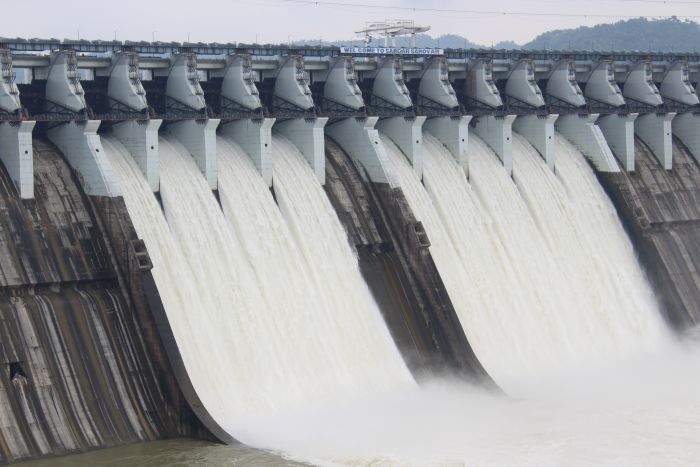
Background
Think of the First Transcontinental Railroad. Minor errors in surveys and maps could have led to disastrous derailments, but meticulous corrections ensured the project's success and the development of the American West. Although this piece of history isn’t exactly like this case study, it proves that small changes can make the biggest impacts. In this scenario, one presentation potentially saved millions of dollars for an entity* that owns several dams.
Random, intermittent measurement errors plagued the company for several years. They had to file monthly reports on their dam's integrity, and they resorted to manual measurements at select sites to fill in gaps created by the "bad data." This was a slow and challenging task.
New urban development altered the infrastructure, leading to electrical interference with the dam sensors, rendering the data unreliable.
The Presentation
The company's employees attended a Campbell Scientific presentation on eliminating noisy vibrating wire sensor data. The data they saw resembled the data they received from their dam monitoring systems. They requested Campbell Scientific to test some of their sensors.
Initially, the company believed that the faulty readings were due to equipment damage caused by electrical transients and planned to replace the instrumentation. However, after meeting with Campbell Scientific, they discovered a different explanation. After testing the sensors, the culprit was revealed to be electrical noise interfering with the vibrating wire sensor measurements.
At the dam, we found that every “faulty” or “damaged” vibrating wire piezometer measurement was corrupted by electrical interference from nearby power lines, resulting in erroneous measurements. The noisy data made it impossible to get accurate data. The VWAnalyzer, our vibrating wire field reader, confirmed that the sensors were undamaged and that the measurements were being bombarded by excessive electrical interference from several hundred feet away.
Analyzing the fundamental vibrating wire frequency and comparing it with the constantly changing noise frequency and signal-to-noise ratio revealed that every vibrating wire piezometer was performing well. However, the chosen on-site vibrating wire measurement system could not differentiate between valid signal frequency and noise.
This discovery was a significant relief to the dam owners because the estimated cost of replacing the sensors was exorbitant. Replacing all the sensors was projected to cost more than $1 million. If the company hadn't reached out to Campbell Scientific to test their sensors, it would have been an unnecessary cost and a big one at that!
After explaining our VSPECT® technology, we offered the company the opportunity to try our CR6 monitoring platform, as we were confident that our CR6 was the solution to their problem. Introducing the company to the CR6 led to remarkable results. Their water level measurements and internal temperature readings from the piezometers became 100% reliable, repeatable, accurate, and free from noise interference. To validate our findings, we compared measurements from two vibrating wire field readers on the same sensor, with minute variations in amplitude and frequency (tenths of a Hertz in frequency and approximately 12 µVolts in signal amplitude between both VWAnalyzers).
Inspired by the success of the CR6, the company decided to upgrade their hardware, implementing the CR6 monitoring platform and AM16/32B multiplexers across all their dams.
Conclusion
Sometimes, solutions to our problems are simpler than we think. The decision to schedule an appointment with Campbell Scientific saved the company money and improved their processes. While this may not always be the case, it worked in this situation. Noisy data is a more common problem than one might think. If you're curious or facing a similar challenge, before making the decision to replace your sensors, ensure that noisy data is not the root cause.
*Please note that due to confidentiality concerns, the client, location, and identifying information for this case study cannot be provided.
Case Study Summary
Application
Improving vibrating wire measurement reliabilityLocation
Southwest, USAProducts Used
VWAnalyzer AM16/32B CR6View the PDF